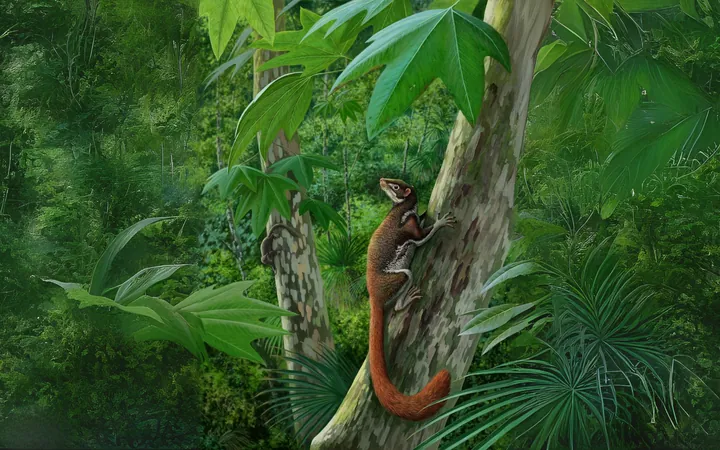
Ancient Fossil Changes Our Understanding of Mammal Evolution Post-Dinosaurs
2025-04-12
Author: Wai
Remarkable 62-Million-Year-Old Find!
A groundbreaking discovery in the fossil world is reshaping how we view the evolution of mammals after the dinosaurs. The most complete fossil of **Mixodectes pungens**, dating back approximately 62 million years, has been unearthed in New Mexico, revealing crucial links between early mammals and modern primates, including humans.
Key Insights into Mammalian Evolution
This extraordinary skeleton, discovered in the Nacimiento Formation near Torreon Wash, offers unprecedented insights into how certain mammalian species adapted to arboreal life in the wake of the catastrophic Cretaceous-Paleogene extinction. The anatomical features of this fossil, reported by Discover Magazine, suggest a lifestyle that involved climbing and a diet focused primarily on leaves.
The Most Complete Specimen Yet
Cataloged as NMMNH P-54501, this partial skeleton is one of the oldest and best-preserved specimens of its kind. Radiometric dating reveals it to be around 62.4 million years old, making it a pivotal piece in the evolutionary puzzle.
Climbing Adaptations Unveiled
The skeletal structure of **Mixodectes pungens** confirms its arboreal lifestyle with features that suggest it was built for climbing—such as a mobile shoulder, a rotational elbow, flexible hips, and a long, agile tail. Its dental morphology suggests a diet that included tough plant matter, highlighting its adaptability during a critical phase in mammalian evolution.
A Unique Arboreal Giant
Estimates of its body mass indicate that **Mixodectes** weighed between 1,270 g and 1,370 g (about 2.8 to 3.0 pounds), which is significantly larger than other mammals of the Paleocene era. This size distinction, along with its diet, points to a unique ecological niche, allowing it to thrive with less competition for resources.
Exploring Evolutionary Connections
Recent phylogenetic analyses place **Mixodectes** within the primatomorphan clade, which encompasses modern primates and their close relatives. These studies show that it may represent an early form of primate or a stem primatomorphan, linking it closely to species like **Microsyops annectens**.
Significance of the Discovery
The evolutionary implications of this fossil are vast. The Paleocene era was a time of rapid diversification of mammals, and **Mixodectes** exemplifies early arboreal adaptations that would later characterize true primates. The research indicates that it evolved traits independently of colugos, showcasing a rich evolutionary experimentation.
A Window into Our Evolutionary Origins
The fossil of **Mixodectes pungens** serves as a crucial link in understanding the complex evolutionary narrative of placental mammals. Its climbing adaptations, specialized diet, and phylogenetic significance provide a clearer picture of the evolutionary journey leading to modern primates—and ultimately, to human beings.


 Brasil (PT)
Brasil (PT)
 Canada (EN)
Canada (EN)
 Chile (ES)
Chile (ES)
 Česko (CS)
Česko (CS)
 대한민국 (KO)
대한민국 (KO)
 España (ES)
España (ES)
 France (FR)
France (FR)
 Hong Kong (EN)
Hong Kong (EN)
 Italia (IT)
Italia (IT)
 日本 (JA)
日本 (JA)
 Magyarország (HU)
Magyarország (HU)
 Norge (NO)
Norge (NO)
 Polska (PL)
Polska (PL)
 Schweiz (DE)
Schweiz (DE)
 Singapore (EN)
Singapore (EN)
 Sverige (SV)
Sverige (SV)
 Suomi (FI)
Suomi (FI)
 Türkiye (TR)
Türkiye (TR)
 الإمارات العربية المتحدة (AR)
الإمارات العربية المتحدة (AR)